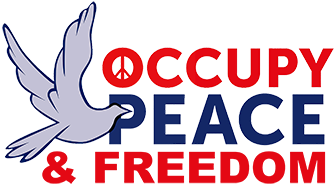May 30, 2022
No amount of western military aid has been able to prevent Russia from achieving its military objective of liberating the entire territories of both Lugansk and Donetsk as Phase Three begins.
By Scott Ritter Special to Consortium News
Russia’s “Special Military Operation”, which began on Feb. 24, is entering its fourth month. Despite stiffer than expected Ukrainian resistance (bolstered by billions of dollars of western military assistance and accurate, real-time battlefield intelligence by the U.S. and other NATO members) Russia is winning the war on the ground, and in a big way.
After more than ninety days of incessant Ukrainian propaganda, echoed mindlessly by a complicit western mainstream media that extolls the battlefield successes of the Ukrainian armed forces and the alleged incompetence of the Russian military, the Russians are on the cusp of achieving the stated goal of its operation, namely the liberation of the newly independent Donbass Republics of Lugansk and Donetsk, which Russia recognized two days before its invasion.
The Russian victory in Donbass comes after weeks of intensive combat that saw the Russian military shift gears away from what has become known as Phase One. That was the month-long opening act which, according to Russian President Vladimir Putin in his Feb. 24 address, was tasked with taking “actions throughout the territory of Ukraine with the implementation of measures for its demilitarization and denazification.”
Putin said the purpose was to restore “the DPR [Donetsk People’s Republic] and the LPR [Lugansk People’s Republic] within the administrative borders of the Donetsk and Lugansk regions, which is enshrined in the constitutions of the republics.”
On March 25, the head of the Main Operational Directorate of the General Staff of the Armed Forces of the Russian Federation, Colonel General Sergei Rudskoy, declared that “the main objectives of the first phase of the operation have been achieved. The combat capabilities of Ukraine’s Armed Forces have been significantly reduced, which allows us, once again, to concentrate our main efforts on achieving the main goal – the liberation of Donbass.”
According to Rudskoy, Phase One’s objectives were to cause:
“Such damage to military infrastructure, equipment, personnel of the Armed Forces of Ukraine, the results of which allow not only to shackle their forces and do not give them the opportunity to strengthen their grouping in the Donbass, but also will not allow them to do so until the Russian army completely liberates the territories of the DPR and LPR. All 24 formations of the Land Forces that existed before the start of the operation suffered significant losses. Ukraine has no organized reserves left.”
Russia has completed Phase One despite the efforts of the U.S., NATO, and the E.U. to supply Ukraine with a significant amount of lethal military assistance, primarily in the form of light anti-tank and anti-aircraft weapons. “We consider it a vast mistake,” Rudskoy concluded, “for Western countries to supply weapons to Kiev. This delays the conflict, increases the number of victims and will not be able to influence the outcome of the operation.”


Recent Comments